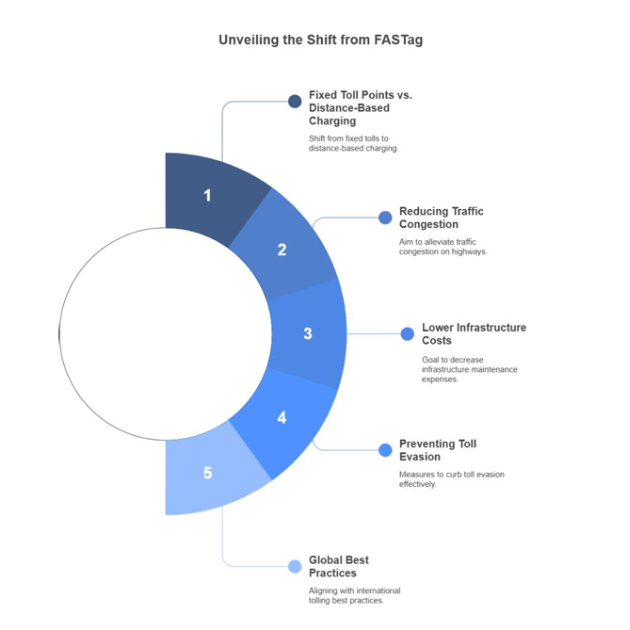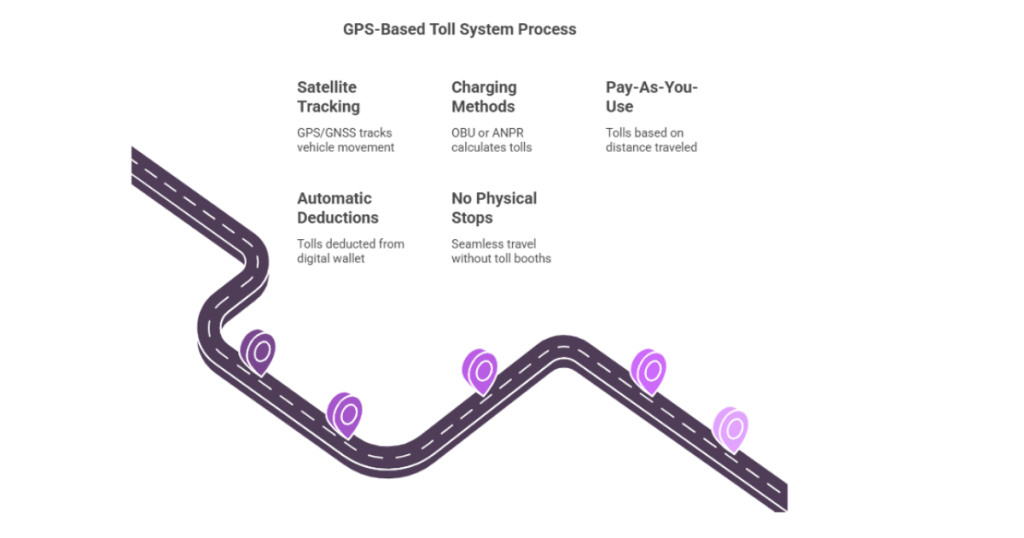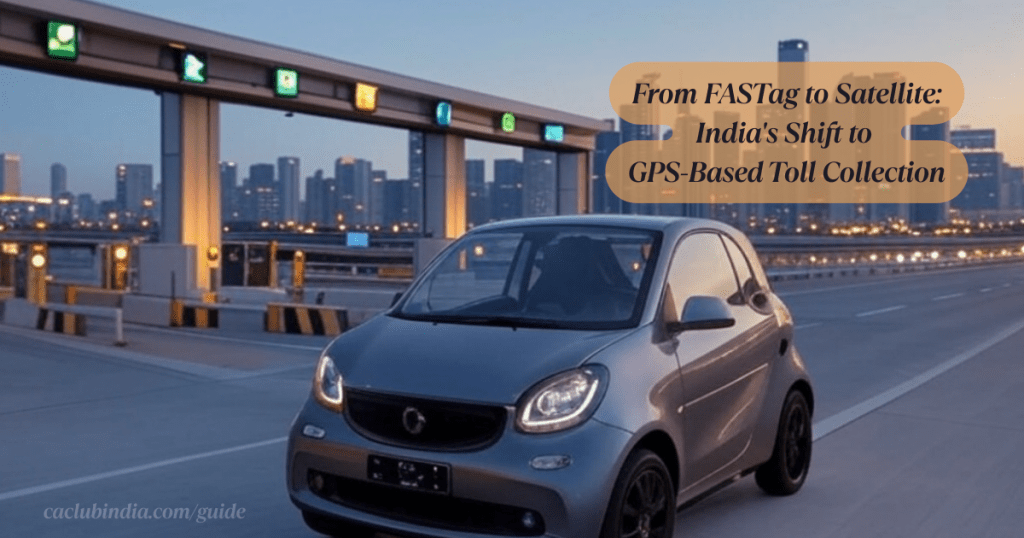India boasts the world’s second-largest road infrastructure, with its National Highways extending over 146,195 kilometres. In the fiscal year 2023-24, toll revenue surged by 35% compared to the previous year, reaching ₹64,809 crore.
As per the latest news, the Indian government is preparing to introduce a GPS-based toll collection system in the next two weeks, phasing out the current FASTag system. This upgrade will enable automatic, distance-based tolling, ensuring drivers are charged only for the actual highway distance they cover, making payments smoother and more accurate. The new GPS toll system will replace FASTag, with a pilot launch around April 16-17, 2025, followed by full implementation by May 1, 2025.
The Union Road Transport and Highways Minister Nitin Gadkari has mentioned that the government plans to implement a global navigation satellite system (GNSS) – based toll collection system on national highways, eliminating the need for toll barriers. This system would lead to a smoother flow of traffic on national highways.
At an event in Mumbai, Union Minister Nitin Gadkari made a significant announcement regarding upcoming changes to India’s toll collection system. He declared, “In the next 15 days we are coming with a toll policy and you will satisfy from our toll policy (National Highways). We are starting satellite toll system so that you don’t have to stop for toll plazas.”
Why Is FASTag Being Replaced?

How the GPS-Based Toll System Works

Understanding the New Toll Collection Mechanism
Vehicle Setup & OBU Installation
- Mandatory OBU Device: Every vehicle must install a GPS-enabled On Board Unit (OBU), which will sync with your FASTag or a new digital payment account.
- Factory-Fitted in New Cars: Automakers may integrate OBUs into new vehicles (similar to embedded connectivity).
- Retrofit for Older Vehicles: Existing cars may require a one-time OBU installation (pricing yet to be disclosed).
Real-Time GPS Monitoring
- Satellite-Based Tracking: The OBU will record your precise highway route and distance using GPS/GNSS technology.
- No Physical Stops: Unlike FASTag (which relies on RFID scanners), tolls are calculated automatically while driving.
Automated Toll Calculation & Payment
- Pay-Per-Kilometer: Charges apply only for the actual distance covered (e.g., cars may pay ₹1.50/km—final rates pending).
- Flexible Pricing: Fees could adjust based on vehicle category, peak hours, or specific highways.
- Seamless Deductions: Payments auto-debit from your linked FASTag balance, UPI, or bank account.
Backup Mechanisms (If GPS Fails)
- ANPR Camera Fallback: License plate recognition cameras will issue post trip bills if GPS signals drop.
- Instant Notifications: Users receive SMS/app alerts for every toll transaction.
Transition from FASTag to Barrier-Free Tolling
- Phasing Out Toll Booths: FASTag lanes will eventually disappear, cutting congestion.
- Gantry-Based Enforcement: Overhead sensors (similar to Singapore’s ERP system) may verify compliance.
Transition Plan for FASTag Users

FASTag vs GPS-Based Toll System: Key Differences
| Feature | FASTag (Current System) | GPS-Based Toll (New System) |
| Technology | RFID (Radio Frequency) | GPS/GNSS + ANPR Cameras |
| Payment Mode | Fixed toll at plazas | Pay-per-kilometer |
| Deduction | At toll plazas only | Continuous, real-time |
| Infrastructure | Requires toll plazas | No physical barriers |
| Accuracy | Fixed charge regardless of distance | Exact distance traveled |
| Traffic Impact | Queues at busy plazas | Seamless movement |
| Cost Structure | Same for all vehicles using same stretch | Dynamic pricing possible |
| Enforcement | RFID scanners | GPS tracking + cameras |
| Vehicle Tracking | Only at plazas | Entire highway journey |
| Privacy | Limited data collection | Detailed movement data |
| Implementation | Tag on windshield | OBU (On-Board Unit) device |
| Coverage | Only at toll plazas | Entire highway network |
| Backup System | Manual lanes | ANPR camera billing |
Key Benefits of India’s New GPS-Based Toll System
- Pay Only for Distance Travelled (Fairer Pricing)
- No More Toll Plaza Queues (Seamless Travel)
- Dynamic & Transparent Pricing
- Better Enforcement, Reduced Toll Evasion
- Lower Operational Costs
- Future-Ready & Scalable
- Reduced Carbon Footprint
States and Highways expected to be included in the Phase 1 launch of India’s GPS-based toll collection system
Phase 1 Implementation (Pilot Project)
Initial Coverage
- Delhi-Mumbai Expressway (Entire 1,386 km stretch)
- Mumbai-Bengaluru Highway (NH 48)
- Delhi-Kolkata Corridor (Portions of NH 19)
States Covered in Phase 1
- Delhi
- Haryana
- Rajasthan
- Madhya Pradesh
- Maharashtra
- Gujarat
- Uttar Pradesh
- Karnataka
What FASTag Users Need to Do Now (2025 Guide)
- No Immediate Changes – Keep Using FASTag
- Prepare for the GPS Transition (2025 Onwards)
- Future Steps (When GPS Tolling Launches)
- Don’t Remove FASTag Yet!
- Watch for Official Updates


